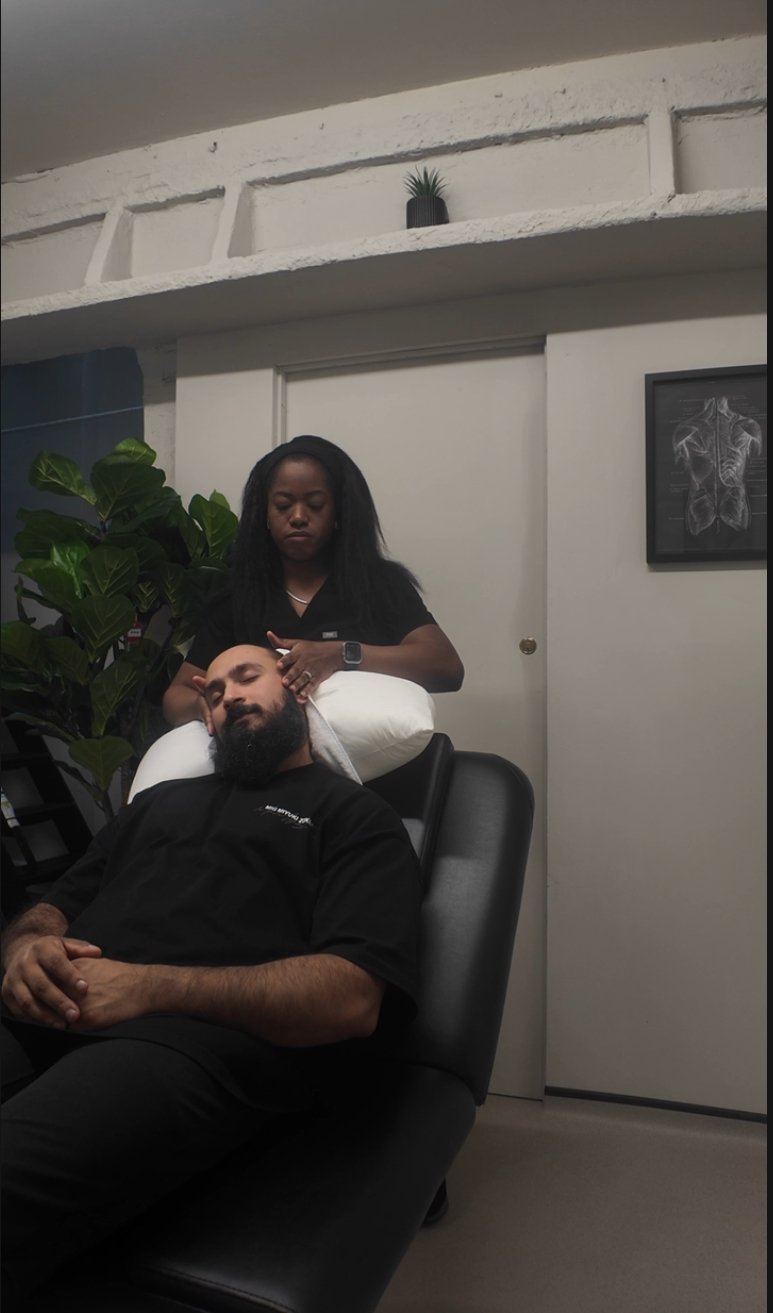
Expert Assisted Stretching & Movement Therapy
Regain control of your body in person or from the comfort of your home online.
How I Can Help
-
Assisted stretching is a guided, hands-on therapy that improves flexibility, mobility, and muscle function. It is perfect for individuals of all activity levels. It involves a trained specialist gently stretching your muscles beyond what you can achieve on your own. We help you to release tension, enhance range of motion, and reduce the risk of injury. Unlike traditional stretching, which relies solely on the individual to move and hold their own positions, assisted stretching involves external support and guidance.
At Stretch and Movement, our expert therapist will help you regain control of your body in person or from the comfort of your home. Our assisted stretching sessions take place in a private and controlled environment at our Little Portland Street Clinic in London, conveniently located close to Marylebone.
Our 1-1 assisted stretching sessions offer personalised support to help your body feel its best and move with ease. Whether you’re recovering from a workout, managing stiffness, or looking to improve athletic performance, assisted stretching will allow you to regain mobility and flexibility improving your overall well being.
Find out more about how Rachelle can help you with assisted stretching today
-
Osteopathy is a holistic approach to healthcare that focuses on diagnosing, treating, and preventing musculoskeletal issues to promote overall well-being by using hands-on techniques to restore balance and mobility to the body, relieving pain and improving function. Ideal for addressing back pain, joint discomfort, sports injuries, or postural imbalances, osteopathy enhances the body’s natural ability to heal itself. Experience a personalised and non-invasive treatment that supports your overall well-being and helps you move freely with confidence.
You can book an Osteopath session for our Little Portland Street Clinic in London, conveniently located close to Marylebone, online today!
-
Experience the transformative benefits of sports massage, a specialised therapy designed to enhance performance, prevent injuries, and accelerate recovery. Whether you're an athlete or lead an active lifestyle, sports massage targets deep muscle layers to alleviate tension, reduce painful muscles, and boost circulation. Perfect for pre-event preparation or post-workout recovery, our tailored approach ensures your body performs at its peak while minimising the risk of strain or fatigue. Discover how to stay ahead in your fitness journey.
You can book an Sports Massage session for our Little Portland Street Clinic in London, conveniently located close to Marylebone, online today!
A safe space to recover
Our innovative approach empowers you to move freely, enhancing flexibility, joint mobility, strength, and balance. All in-person appointments will take place in our private studio and treatment room.
In-person and remote options
Our studio is conveniently located in Marylebone, London. Can’t make it today? No worries—we’ve got you covered online.
Meet Rachelle
Rachelle began as a sports therapist passionate about helping people in high-demand professions struggling with muscular aches, pains and injuries. Her love for stretching as part of her recovery led her to pursue a qualification as an assisted stretching therapist, and she ultimately earned a Master’s in Osteopathy. She continues her academic journey today with another master’s degree in London.




